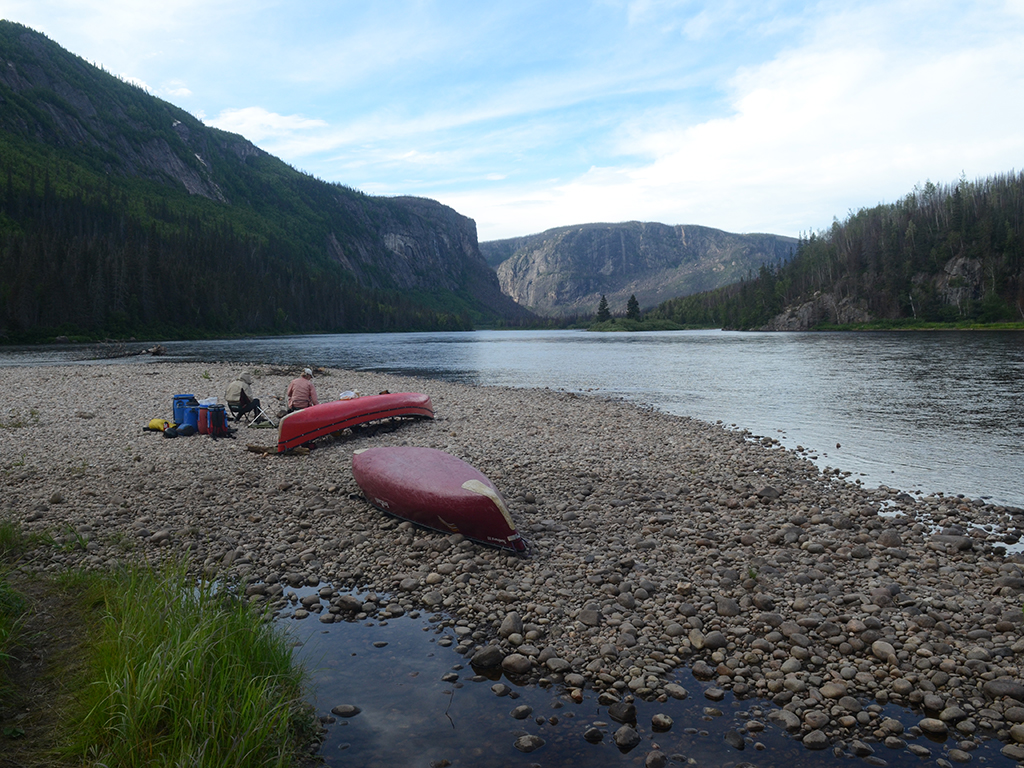Intense, I thought to myself as I smiled in disbelief while scanning the roiling river on the last day of an epic canoe trip down Quebec’s wild beast – the Moisie River. Each day had presented enough challenges to humble anyone but this one proved to be the toughest. Ahead, a white wall of foaming, raging water rose up across the river. The only way past was a narrow gateway of calmer water next to the right shore. It was hard to see anything after that. The map warned of a two-kilometre stretch of huge rapids but with this river, you really didn’t know how big until you rode the tiger yourself.
I pushed my solo canoe into the water and paddled forcefully toward the other shore but the current was stronger than I anticipated and my boat began pulling toward the center. I plunged my paddle in deeper, prying and digging my way across but the river was too powerful and I decided to straighten out and hit the river-wide roller dead on. The bow smashed the wall of water and shot up into the sky as I braced like hell and breathed a sigh of relief when the boat came down and I was still upright. That’s when the second huge wave hit. My canoe flipped and, instantly, I was gasping for air while a mass of white chaotic turbulence swirled around me.
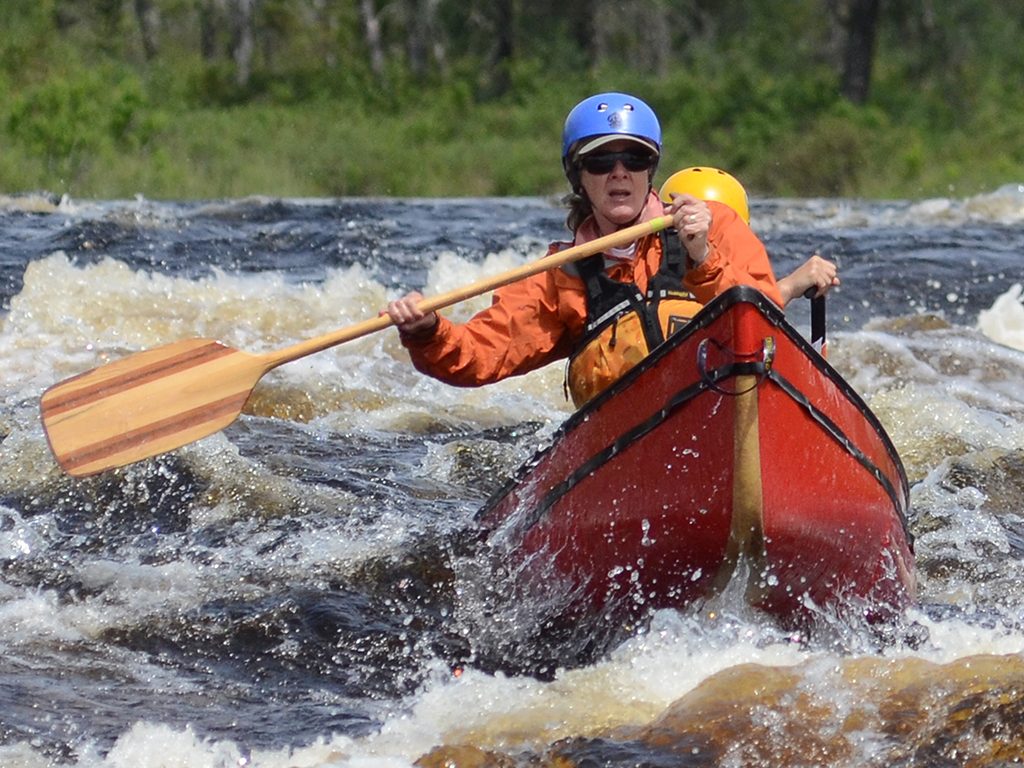
The Moisie is one of the last great and true Quebec wilderness rivers – legendary for its awe-inspiring landscapes, abundance of wildlife, and world-class salmon fishing. But it’s also one tough mother, comparable to one of those crazy obstacle courses that leaves you happy just to complete, only this one was nearly 400 kilometres long, lasted 12 days, and had only a three entrants – me, my wife Marilyn and our good friend Ruth.
From where we started on the Pekans River just south of Labrador City and then down the Moisie to the finish line several kilometres from Sept. Isle on the north shore of the St. Lawrence River, there are more than 40 sets of rapids that were long, hard to scout, tricky to line, and not much easier to portage around if you chose to hoof it. Throw in a powerful current, temperamental weather, a couple of days where the black flies left our clothes spray painted with blood, and nearly 20 portages on ancient aboriginal trails, some of which were more than a kilometre long and required near mountain goat abilities, and you’ve got a pretty good course set up by Mother Nature, herself.
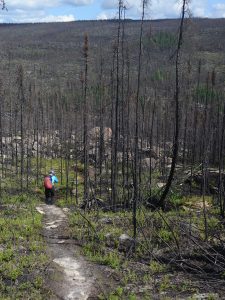
The nastiest of the portages led us around a set of waterfalls where the Pekans meets the Moisie through the charred remains of a forest fire in 2013 that stretched about 125 kilometres south along the river. We followed the narrow windy trail through bogs that swallowed my legs to the knee, over and under fallen trees, up and down rocky crevices and past brittle sharp branches of blackened trees that tore at my wind pants to the point that duct tape was all that held them together. It took us three trips to portage our solo and tandem canoes and all of the gear, and by the time we finished, I was seriously overheated, dizzy with dehydration, and spewing profanities.
Even so, the scenery was worth every word I cussed. The route on the Pekans began in a flat and moss covered semi-tundra landscape where bald eagles soared over stunted jack pine, bank swallows danced around us, and terns plunge into the clear water for fish. Rolling hills of thick forest soon appeared on either side among the sandy white beaches, before the swift current of the Moisie cut through deep canyons nearly a kilometre high where countless waterfalls cascade down cliffs and breathtaking valleys spread over the land. No wonder some call it the Nahanni of the East.
With the boulder strewn shoreline rushing by me, I grabbed the end of the fully loaded canoe and desperately began using the paddle in my other hand to get it out of the rollercoaster of waves that repeatedly left me gasping for breath. But the current proved too much once again and I reluctantly decided to let the boat go and try to make it to shore to save myself from being sucked into a huge hole that boiled up like a witch’s cauldron just downstream. After, what seemed like forever, my hand finally touched the rocky shoreline, and I clambered onto a large boulder, exhausted and wondering whether my canoe would survive the rapids.
Luck seemed to be going my way – the canoe had landed in an eddy just within view and I quickly jumped from boulder to boulder down the shoreline with the hope of saving my boat before it caught the current again and went back into the rapids. I wasn’t fast enough. By the time I reached the spot, the canoe was nowhere to be seen and neither were my paddling partners.
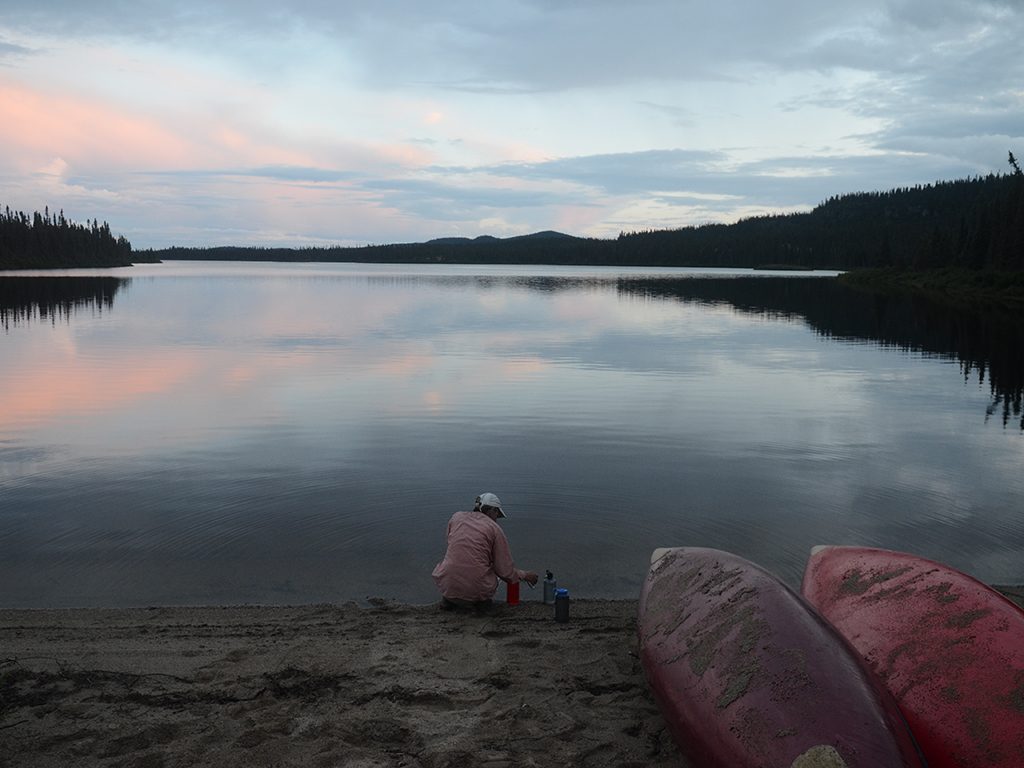
The Moisie is as remote a river as you’ll find. The drive to the put-in took 20 hours from our home in Ottawa along the St. Lawrence River and north through endless forest and only a handful of communities, the last being a couple of hundred kilometres on gravel road, to Labrador City just inside Newfoundland’s border. On the river, we saw only one other paddling group and only a few fly fishing guides in the lower stretches where the quest for Atlantic salmon is an important economic base for the region. And since the Quebec government designated the Moisie River as a conservation region in 2003, sparing it from mining, logging, and damming for hydroelectricity, untouched stands of spruce, fir, birch and aspen line the shores. The only thing other than fire to affect the forest is the spruce bud worm which has decimated about a hundred kilometres of the spruce trees south of the burn area. More than one local assured us that it was a natural cyclical evolution of the forest and that other trees would replace the dead ones and change the forest as it has done for thousands of years.
These forests are home to many mammals and on the stretches with head winds, it was possible to surprise any which ventured to shore since they couldn’t smell us. The Moisie rewarded us with a moose and two black bear sightings but the most exhilarating moment came on the second last day when we spotted three wolf pups scampering around on a steep gravel shoreline. When we got close, a howl from the forest signalled the pups to high tail it to safety where the mother was waiting on the edge, cautiously staring us down as our canoes silently floated by.
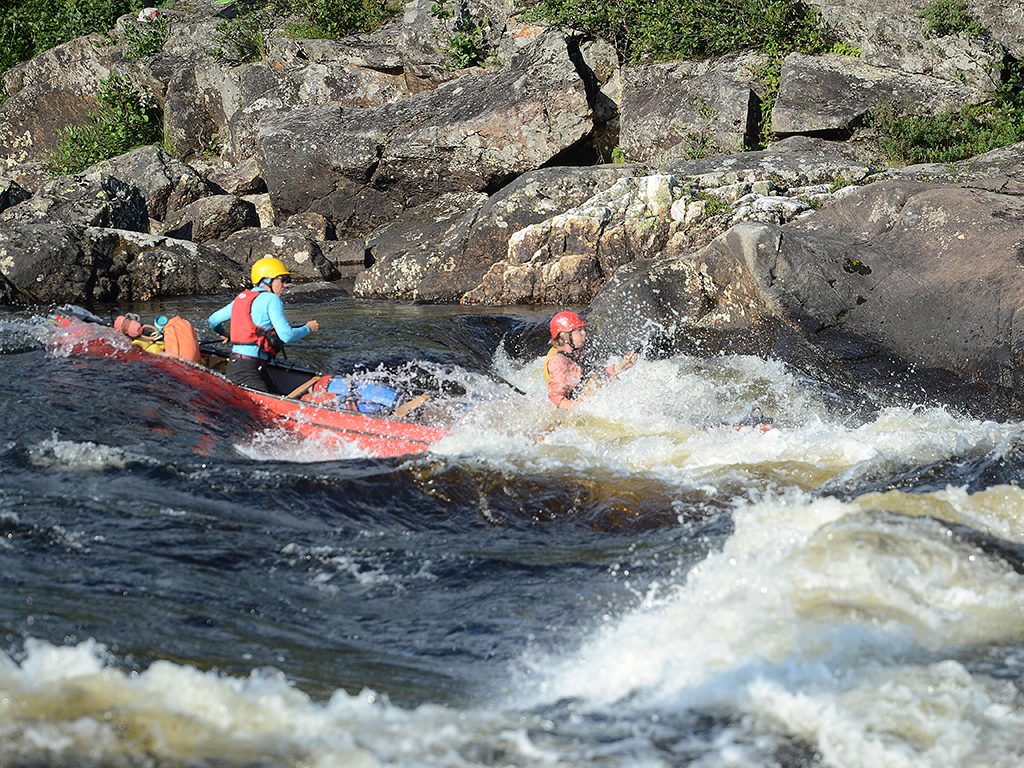
I sat down by the deafening river to regain my breath and organize my thoughts. Ultimately, I needed to find my boat and know if it and the camera gear tethered to it inside a waterproof case had survived the long and nasty beating. But first I had to make sure Marilyn and Ruth were okay and show them that I was safe. I made my way up the boulder strewn shoreline and after a half hour of boulder hopping, I was relieved to see them far up the river, little specks of colour who appeared to be portaging their canoe. I stood on a high outcrop and signalled them with a wave of my paddle. They signalled back and then I turned back downstream.
About a half kilometre downstream I reached a railway bridge. With still no canoe in sight, I climbed up the thick brush to get over the bridge but soon realized the track was fenced off and topped with barbed wire. There was no choice but to go under the bridge and I slowly began to scale the near vertical concrete and rock wall below the tracks. It was either this or swimming the rapids that raged below me.
The layout of the rock face forced me to go up and up until, eventually, I climbed above the bridge with the river 50 metres below. Adrenaline raced through me as I clung to my paddle with one hand while the other grasped at any root or crevice I could find. Sometimes, I would throw the paddle ahead of where I was climbing so I could use both hands to save myself from plunging to my death. Three hours of sweat and climbing skills I never thought I had and I was past the train bridge and back down on shore. At this point the forest was so thick I decided it would be easier to jump back into the river’s current and swim.
I jumped in the water and swam toward a gravel island in the middle of the river but after 15 minutes of getting nowhere I realized I was caught in a back current. I was physically and mentally drained. Still no sign of my canoe but at least I was past the worst of the rapids. At that moment, two men in a motor boat appeared across the river and turned toward me. I was still floating in the water with my lifejacket on and the paddle in hand when the boat came up next to me and a man in the bow reached out and said, “hi, you must be Ralph.”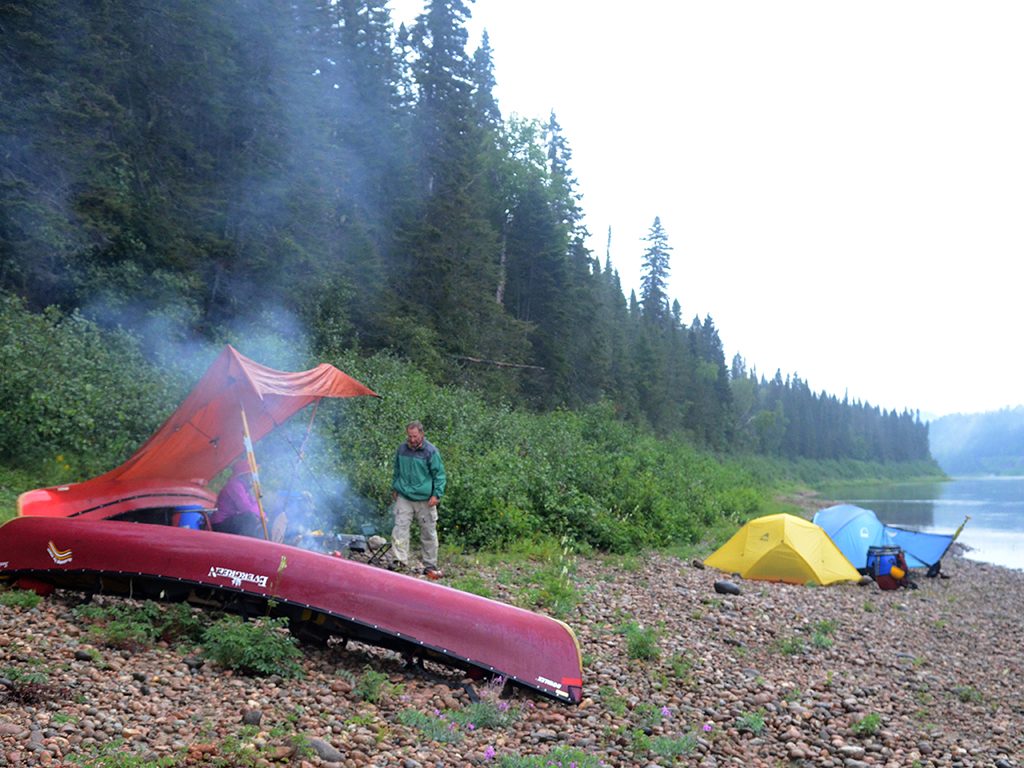
The whole Moisie adventure was full of memorable occurances; meeting a woman moments before the liquor store in Labrador City closed whose son shuttled us in his huge truck to the put-in on the Pekans because he happened to have the day off from his mining job, being strafed by a helicopter just when we were running a huge set of rapids with enormous boils that threatened to capsize us while a fierce head wind blew our boats around, getting hit by a storm that was so strong it created a creek that almost washed out our already devastated camp and made the river rise nearly a metre by day break, and finding a shoulder pad lying on a beach which made portaging the canoes on the last grueling trail around a fish ladder in the rain much more bearable.
And now this. I grinned – they must have found my canoe. I hauled myself into the boat and I was invited back to the fishing camp they worked at to borrow some dry clothes and then they would take me out to search for my missing companions. On the way, they explained that my capsized canoe had been spotted floating past the camp a few kilometres from where they picked me up. They hauled it ashore and cracked open the camera case and waterproof barrels to figure out what happened and dry out the gear. After reading through our journal and realizing the events were just unfolding, they went out to search for us.
We took the fishing boat back up river to find Marilyn and Ruth who were just paddling down the last of the rapids as we approached. The timing couldn’t have been any better. After seeing me capsize, they decided to get down the rapids piece by piece, sometimes lining sometimes portaging and sometimes running sections of the river. All we could think about was getting to the nearest town and celebrate with a bottle of wine. But our new friends insisted we stay the night at the camp and have dinner. How could we refuse?
Story by Ralph Plath
Pictures by Ralph Plath
and Marilyn Mikkelsen
Getting There and Back
We asked around town once we arrived in Labrador City and paid a very kind young man $250 to spend his day off using his truck to take us to the put-in on Highway 386 by a bridge over the Pekans River about 40 kilometres south of Labrador City.(It’s also possible to paddle the Moisie River from its headwaters which requires a lot of lake travel and a two-day portage).
Take out is at the town of Moisie at the end of the Moisie River. From there, you can either paddle to the city of Sept-Iles or flag a ride. Either way, unless you want to take two vehicles and do your own shuttle, you will have to put your vehicle on a train in Labrador City and have it shipped to the train yard in Sept-Ile. It cost us $812 to have our car and trailer shipped. We were lucky enough to have our hosts at the fishing lodge drive me to pick up our vehicle.
